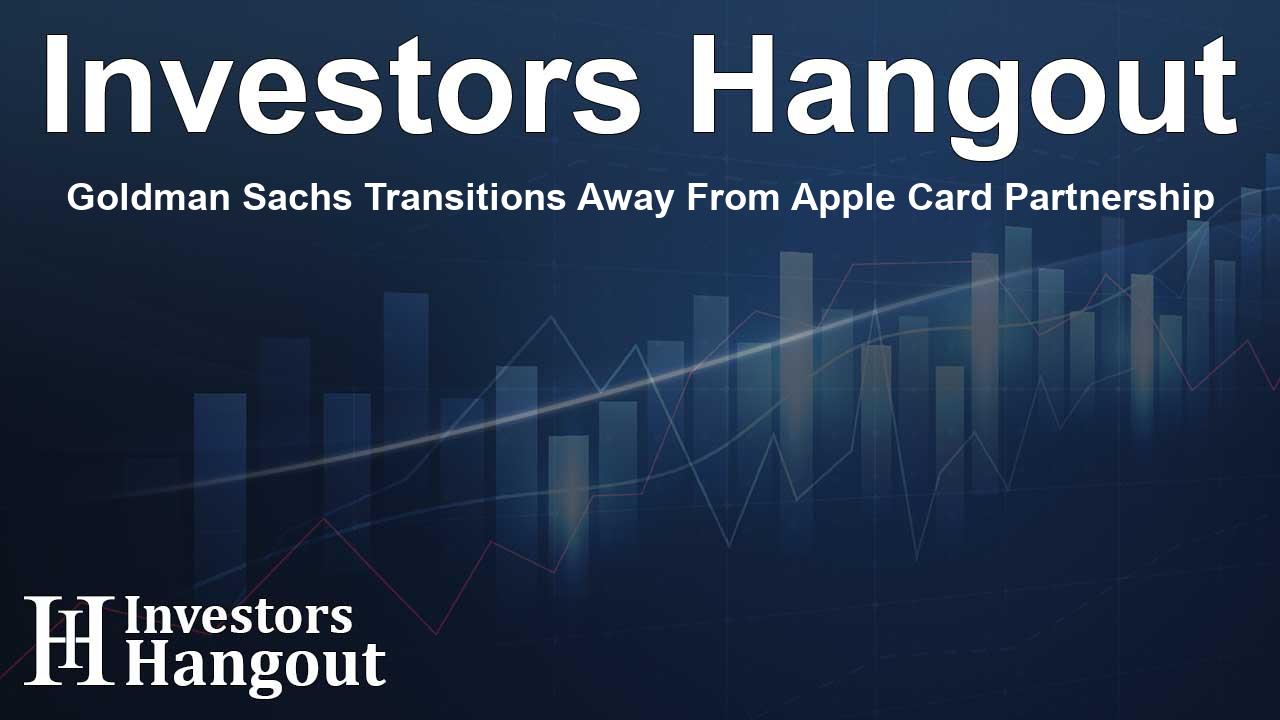Goldman Sachs Transitions Away From Apple Card Partnership

Goldman Sachs Revises Its Banking Strategy
In a significant strategic shift, Goldman Sachs has decided to terminate its collaborative efforts with Apple regarding their credit card. This partnership, once heralded as revolutionary in 2019, is now coming to an unexpected conclusion. Analysts suggest that this move might force Goldman to reconsider one of its main business lines entirely, faced with the potential costs involved.
Historical Context of Goldman's Consumer Banking Efforts
To understand the current changes at Goldman Sachs, it’s essential to reflect on its history in consumer banking. Nearly a decade ago, the investment bank, traditionally catering to high net worth clients, made a pivot towards the mass affluent market. This included launching Marcus by Goldman Sachs in 2016, which provided personal loans and savings accounts.
Subsequently, Goldman added credit cards to its offerings, collaborating with brands like General Motors and Apple to attract a broader clientele. Unfortunately, by August 2022, the consumer banking division was still not profitable, leading to a reevaluation of their approach.
Restructuring Efforts at Goldman Sachs
In response to ongoing losses, Goldman Sachs opted for a major reorganization of its business units. The firm consolidated asset and wealth management into one segment, while keeping the investment banking and global markets divisions separate. This strategic restructuring aimed to enhance efficiency and profitability.
Discontinuing Non-Core Business Ventures
The reorganization reflects Goldman's decision to streamline its operations. The primary segment now focuses on investment banking and asset management, while the platform solutions unit, which included various partnerships, is facing scrutiny. Notably, recent reports indicate that Goldman will be parting ways with its credit partnerships, including those with GM and Apple.
Impact of Card Partnership Exits
Recent developments suggest that Goldman Sachs is keen on exiting its card partnerships, particularly with GM and Apple. The firm has entered discussions with GM to seek a new issuer for their credit card, which may also affect their arrangements with Apple. Analysts forecast a transition of the GM credit card business to Barclays, a significant move within the credit sector.
As discussions with Apple evolve, there are indications that the technology giant may engage other possible buyers for its credit business. Companies like Synchrony Financial and Capital One are reportedly in consideration, while JPMorgan Chase has been notably interested in taking over Apple’s credit card program.
Financial Implications for Goldman Sachs
Goldman Sachs could face considerable costs associated with terminating these partnerships. Estimates suggest exit costs could range from $500 million to potentially $4 billion. Such financial implications are vital for analysts and investors monitoring the firm’s stock performance and market standing.
The Future Outlook for Goldman Sachs
Amid these transitions, Goldman's stock has experienced fluctuations, responding to the projected $400 million loss from these changes. Despite an initial decline, the shares have shown resilience, indicating investor confidence in the firm's core business focus moving forward.
Mike Mayo, a notable analyst in the banking sector, emphasizes that this strategic pivot could ultimately benefit Goldman by allowing it to concentrate on its primary sectors of global banking and markets, alongside asset and wealth management.
Key Opportunities Ahead
With a clear understanding of its core competencies, Goldman Sachs has the opportunity to strengthen its investment strategies and enhance shareholder value. By allocating resources effectively, the firm could navigate back toward profitability, learning from past challenges while structuring a more focused approach.
Frequently Asked Questions
Why is Goldman Sachs ending its partnership with Apple?
The partnership is reportedly being discontinued because it was not as profitable as anticipated, prompting Goldman to reassess its consumer banking strategy.
How has Goldman Sachs' consumer banking initiative performed?
Goldman Sachs’ efforts in consumer banking have faced challenges, with the segment still operating at a loss even as recent as 2022.
What financial impact will Goldman face from these changes?
Goldman Sachs is facing potential exit costs ranging from $500 million to $4 billion due to the termination of these partnerships.
What sectors will Goldman Sachs focus on going forward?
The firm is expected to concentrate on its core businesses of global banking, markets, and asset and wealth management after exiting non-core operations.
What are analysts saying about Goldman Sachs' future?
Many analysts, including Mike Mayo, maintain a positive outlook on Goldman Sachs, suggesting that the streamlined focus could benefit the firm in the long term.
About Investors Hangout
Investors Hangout is a leading online stock forum for financial discussion and learning, offering a wide range of free tools and resources. It draws in traders of all levels, who exchange market knowledge, investigate trading tactics, and keep an eye on industry developments in real time. Featuring financial articles, stock message boards, quotes, charts, company profiles, and live news updates. Through cooperative learning and a wealth of informational resources, it helps users from novices creating their first portfolios to experts honing their techniques. Join Investors Hangout today: https://investorshangout.com/
Disclaimer: The content of this article is solely for general informational purposes only; it does not represent legal, financial, or investment advice. Investors Hangout does not offer financial advice; the author is not a licensed financial advisor. Consult a qualified advisor before making any financial or investment decisions based on this article. The author's interpretation of publicly available data shapes the opinions presented here; as a result, they should not be taken as advice to purchase, sell, or hold any securities mentioned or any other investments. The author does not guarantee the accuracy, completeness, or timeliness of any material, providing it "as is." Information and market conditions may change; past performance is not indicative of future outcomes. If any of the material offered here is inaccurate, please contact us for corrections.